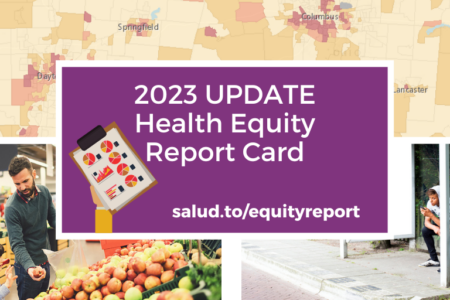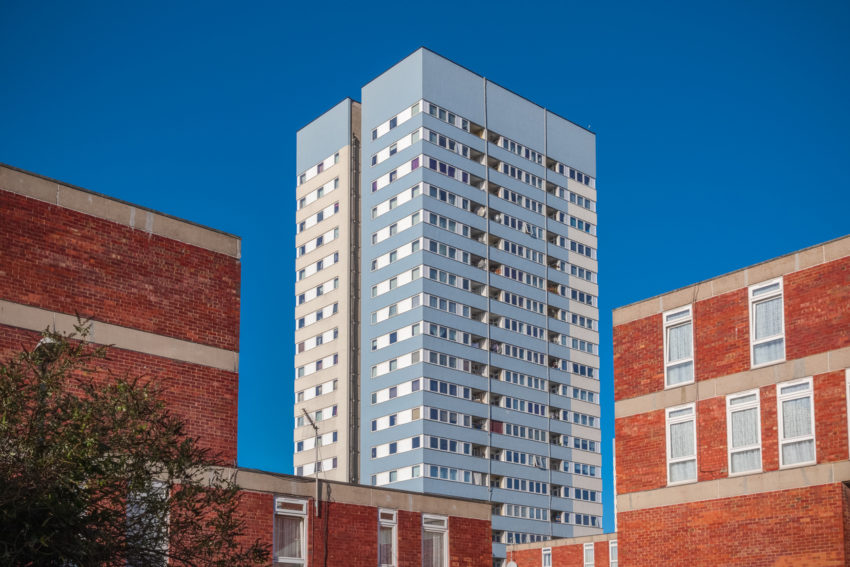
Share On Social!
This is part of the Salud America! The State of Latinos and Housing, Transportation, and Green Space: A Research Review »
Abstract
Across the United States, Latino communities vary in affordable housing, safe and adequate transit, parks and open green space, and other elements that are necessary to fully thrive and achieve health equity.
These differences in opportunity result in health disparities between different zip codes or census tracts—with poor health outcomes more prevalent in communities of color and low-income communities.
It is perhaps even more critical to address these underlying social, economic, and environmental factors that contribute to health than to address the health disparities directly if we are to hope for long term changes in community health and well-being.
This research review aims to examine the literature with regards to the current status of housing, transportation, and green space within U.S. Latino communities, and highlight programs and policies that could improve neighborhood health equity in Latino communities.
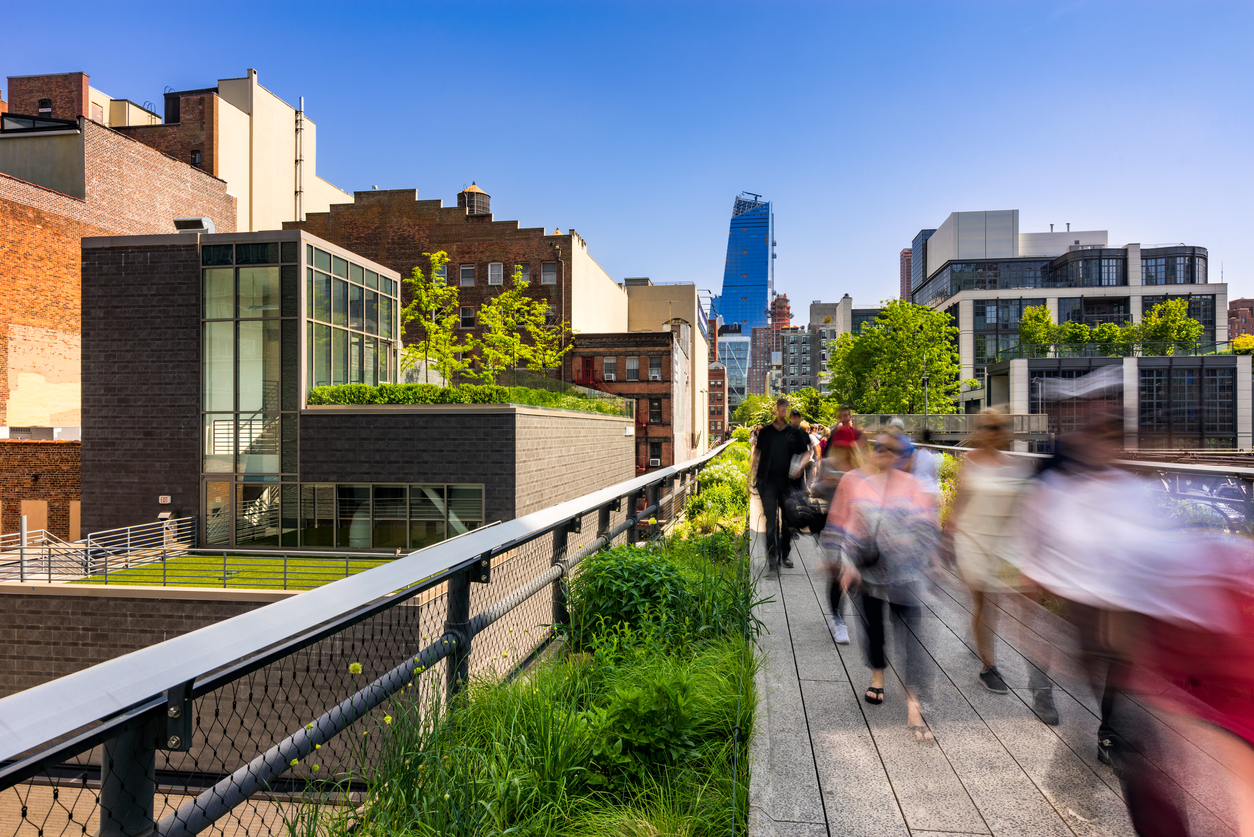 Access to safe, high-quality housing, transportation, and green spaces are discussed together because when combined in a single community, they form the foundation for healthy, active lifestyles that allow further access to work places (financial stability), health and educational resources, and social networks, all of which play a role in health equity. Thus, by addressing inequities in housing, transportation, and green space within Latino communities, we hope to also improve health equity in these communities.
Access to safe, high-quality housing, transportation, and green spaces are discussed together because when combined in a single community, they form the foundation for healthy, active lifestyles that allow further access to work places (financial stability), health and educational resources, and social networks, all of which play a role in health equity. Thus, by addressing inequities in housing, transportation, and green space within Latino communities, we hope to also improve health equity in these communities.
Furthermore, a combined analysis of housing, transport, and green space allows urban planners, developers, and policy makers to work together to design community spaces that best fit the needs of residents while addressing these social causes of health inequities.
To best support Latino communities, evidence suggests that transit-oriented development should be prioritized in low-income Latino neighborhoods, with an emphasis on creation of affordable rent units directly adjacent to the transport hub. To mitigate the risk of displacement that often follows revitalization projects in Latino communities, public policy, incentives, and regulations are needed to stabilize and secure current affordable housing stock and to build more affordable housing in these areas.
These transport-oriented development projects should build on the social, political, economic, and cultural forms of capital that already exist in Latino neighborhoods, and should emphasize preemptive public participation by community members in the development process. Emerging evidence has shown that cases in which a central plaza is built, and decorated by local artists, results in reinvigorating the neighborhood, retention of the Latino identity of the community, and satisfaction among its residents. Such community activism and involvement in the development process has resulted in successful neighborhood revitalization with limited displacement and gentrification.
Finally, use of horizontal networks of nontraditional public-private partnerships, along with Latino “cultural brokers,” has been effective in leading to lasting neighborhood change. This has been especially true for promoting addition of green space in low-income Latino communities, where environmental justice issues have long been a challenge.
Introduction
Latinos form the second-largest racial/ethnic group within the United States and will play a significant role in shaping the future of the U.S. economy [1].
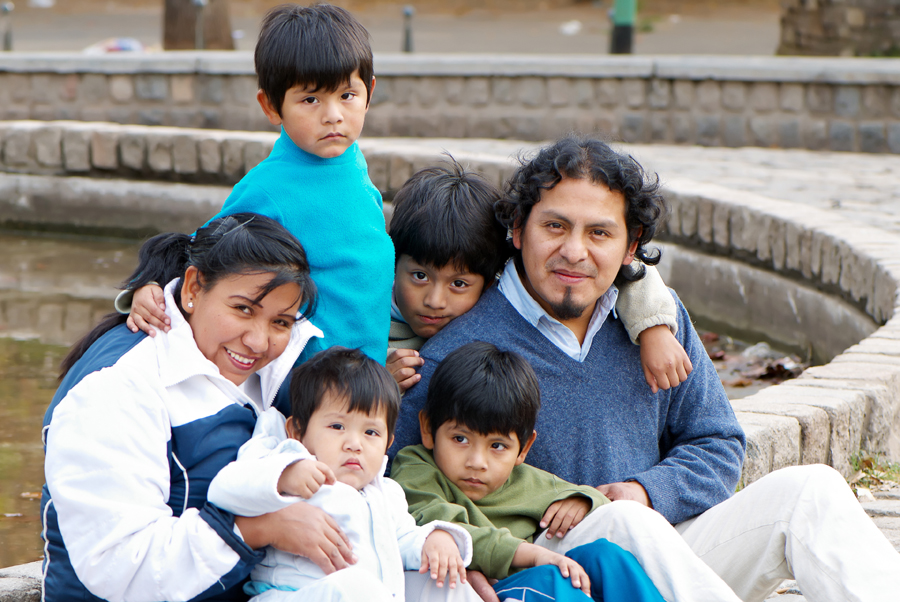 Within the context of American neighborhoods, Latino subpopulations face specific challenges in finding affordable and stable housing, safe, accessible transportation options, and maintained green spaces.
Within the context of American neighborhoods, Latino subpopulations face specific challenges in finding affordable and stable housing, safe, accessible transportation options, and maintained green spaces.
The location of quality housing, accessible public transit, complete sidewalks, protected bike lanes, safe streets, and well-maintained parks is highly associated with the presence of healthy food, good schools, medical care, and low-crime environments [2]. As a result, where you live is significantly associated with how healthy you are [2–4].
However, residential segregation has created social and physical environments in which hazards, risks, and the availability of goods and services are differentially distributed across neighborhoods. Community-wide problems including inadequate housing, lack of public transportation, and neighborhood deterioration shape health and contribute to health inequities affecting Latino populations in the United States [5].
Land use decisions, which shape the physical environment of a community, affect the health of residents in many ways. Land use decisions impact the design, permitted use of space, housing location and density, format of transportation, level of segregation, and the state of the natural environment in a given area [6].
In the past, land use regulations and policies have worsened health inequities in Latino communities by limiting access to important neighborhood features such as high quality, safe, and affordable housing, parks and open spaces, healthy foods, transit, and educational and employment opportunities [6]. Even though many historic discriminatory policies have been outlawed, “racial discrimination persists in many forms, such as unfair bank lending and realtor practices that sort prospective homebuyers into certain neighborhoods based on their race, and zoning laws that prohibit lower cost multi-family housing,” which can limit the opportunities for people of color to rent or own an affordable home in neighborhoods with good schools, living wage jobs, green spaces, and safe transportation and environments [7]. When new policies do not adequately address the historic segregation and discriminatory policies that have led to the unhealthy state of many Latino neighborhoods in the U.S., the physical, mental, and social well-being of a large and growing segment of the American population is neglected.
A lack of affordable housing has forced Latinos, and particularly low-income Latinos, to move farther away from transport hubs where rents tend to be high [8]. As the cost of housing is barely sustainable, more and more Latinos are moving to areas where rents are lower but public transport is insufficient and poorly accessible [8, 9]. As urban housing markets have become unaffordable, Latino migration into town and rural communities in the South and Midwest has occurred, restructuring how Latino neighborhoods are established in the U.S. [8, 10, 11].
In urban areas, gentrification has led to displacement of Latino residents, forcing many to leave family, friends, jobs, and social networks. Within the Latino context, gentrification can be defined in two ways. The first results when home prices rise as a result of improved quality of the home itself or of the neighborhood and its resources, making real estate or rents unaffordable for current residents and allowing more wealthy residents, of the same or a different cultural group, to move in. In this report, this concept is called “displacement.” The second definition of gentrification refers specifically to when neighborhood revitalization leads to displacement of one cultural group and replacement with a more affluent, different cultural group [12]. In response, some Latino communities have undertaken successful community activism initiatives to maintain affordable housing and cultural authenticity in their neighborhoods [12–15]. These communities provide examples of tools policymakers, nonprofit organizations, and community residents can use to limit displacement and gentrification in Latino communities while neighborhood revitalization projects provide needed amenities such as better-quality housing, improved transport, or safer, modern green spaces.
Thus, as Latino communities are further characterized by lower-quality, lower-cost housing that is a greater distance from transport and has less recreational green space, the health-promoting resources accessible to Latinos are decreasing as well [4, 12]. Only by understanding the current housing, transport, and green space needs of Latino communities across the United States today can policymakers appropriately recommend changes to support equitable neighborhood development for all.
Neighborhood revitalization projects have traditionally been extremely detrimental to low-income communities and communities of color, including Latino communities.
This review provides examples revitalization projects in Latino communities that have successfully avoided the consequences of displacement, gentrification, and extreme housing unaffordability that are often a byproduct of revitalization, by focusing on public policy and social sector activism that promotes housing affordability and effective community involvement in the development process. Multi-sectoral and multilevel collaborations engaging nontraditional partners have been an essential component of successful initiatives that have led to sustainable, health-promoting equity benefits in housing, transportation, and green space in Latino communities across the United States.
Methodology
For this research review, electronic searches of PubMed, Google Scholar, and relevant government and organization websites were performed to identify peer-reviewed literature, government and organization reports, policies, and programs pertaining to the current state of housing, transportation, and green space needs in Latino communities across the United States.
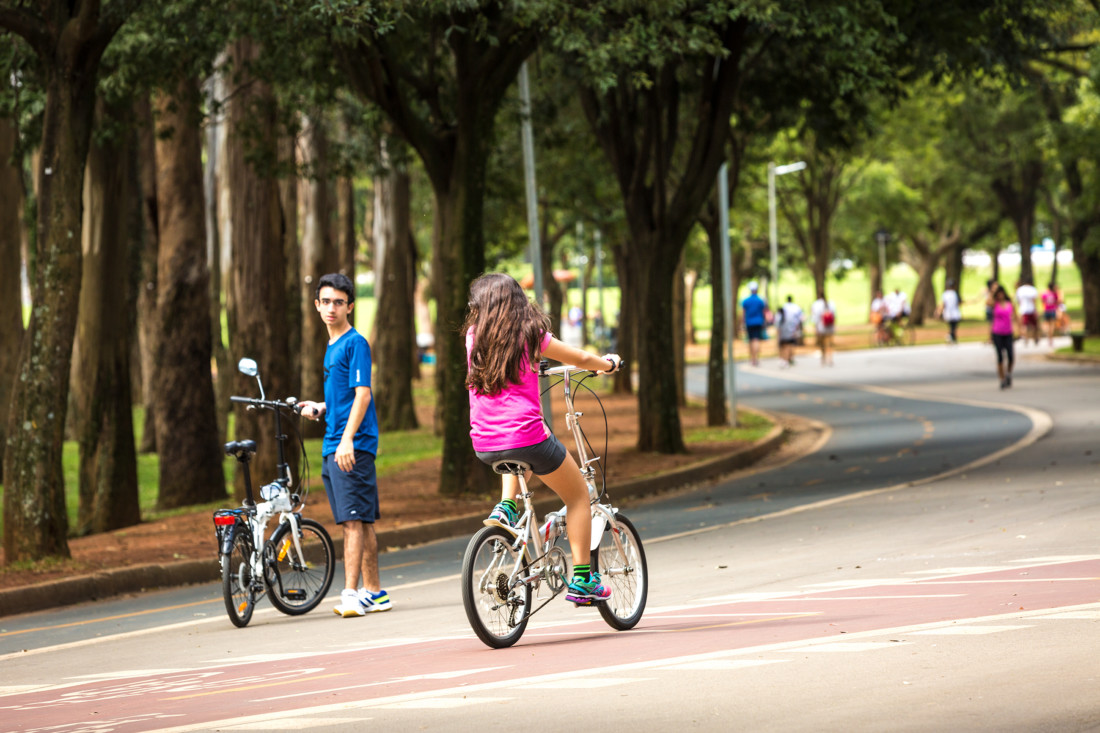 Combinations of the following keywords were used: “Latino,” “Hispanic,” “Access,” “Affordable Housing,” “Bike Lanes,” “Environmental Justice” “Equitable Development,” “Eviction,” “Gentrification,” “Green Space,” “Home Ownership,” “Housing,” “Housing Policy,” “Neighborhood,” “Park Access,” “Public Transportation,” “Rural,” “Safe Routes,” “Transit Use,” “Transit-Oriented Development,” and “United States.” The terms “Latino” and “Hispanic” were used interchangeably to perform searches, but only “Latino” will be used in this report for simplicity.
Combinations of the following keywords were used: “Latino,” “Hispanic,” “Access,” “Affordable Housing,” “Bike Lanes,” “Environmental Justice” “Equitable Development,” “Eviction,” “Gentrification,” “Green Space,” “Home Ownership,” “Housing,” “Housing Policy,” “Neighborhood,” “Park Access,” “Public Transportation,” “Rural,” “Safe Routes,” “Transit Use,” “Transit-Oriented Development,” and “United States.” The terms “Latino” and “Hispanic” were used interchangeably to perform searches, but only “Latino” will be used in this report for simplicity.
Included in this review are studies, government and organization reports, policy statements, and news articles that best explain the state of Latino communities across the United States with regard to their current housing patterns, transportation use, and green space access, to better understand the needs American Latinos face in each category. Particular attention was paid to sources that describe issues specific to Latino communities in the United States, and which offered solutions in the Latino context, proven by success in diverse Latino communities.
Exclusion criteria included articles written in languages other than English. No firm limits were placed on publication date for background research, but no studies older than 15 years were used to describe current housing, transport, or green space patterns, and an attempt was made to keep these analyses within the last 5 years.
Studies and reports from which policy suggestions are derived were conducted in the United States and included Latinos, though some studies providing background or supporting research were conducted outside the United States.
Quick links from our Research Review »
See the Green Space Fact Sheet!
More from our Research Review »
- Executive Summary
- Introduction & Methods: Latino Housing, Transportation, and Green Space
- Research: Latino Families Burdened by Housing Costs, Eviction
- Research: Latino Rural Migration Led to Housing, Transportation Inequities
- Research: Latinos Face Big Public Transportation Challenges
- Research: Latino Communities Lack Accessible Green Space
- Strategy: How to Increase Affordable Housing in Latino Communities
- Strategy: How Transit-Oriented Development Benefit Latinos
- Strategy: Improve Public Transit to Improve Latino Quality of Life
- Strategy: Green Space Projects Can Boost Latino Health
- Strategy: Latino Community Involvement Can Spur Environmental Justice
- Policy Implications: Latino Housing, Transportation, and Green Space
- Future Research Needs: Latino Housing, Transportation, and Green Space
References for this section »
1. Krogstad, J. M., & Hispanic, U. S. (2017). Population Growth Has Leveled Off 2017. Pew Research Center.
2. Calloway, E., & Hanley, C. (2018, October). 8 Policies That Have Contributed to Place-Based Health Disparities Across Generations. H. Retrieved from https://medium.com/changelab-solutions/8-policies-place-based-health-disparities-ea278adfda96
3. Woolf, S. H., Zimmerman, E., & Simon, S. (2013). The Inextricable Link Between Neighborhoods and Health. Department of Housing and Urban Development: PD&R EDGE.
4. Safe Routes to School National Partnership. (2015). Equity Atlases: How Data and Maps Can Illuminate Transportation and Equity. 2015. Safe Routes to School National Partnership.
5. National Academies of Sciences, E. (2017). Communities in Action: Pathways to Health Equity. doi:10.17226/24624
6. Kelleher, K., Reece, J., & Sandel, M. (2018). The Healthy Neighborhood, Healthy Families Initiative. Pediatrics, 142(3), e20180261. doi:10.1542/peds.2018-0261
7. University of Wisconsin Population Health Institute. (n.d.). County Health Rankings Key Findings Report 2019. County Health Rankings & Roadmaps. Retrieved April 30, 2019, from http://www.countyhealthrankings.org/reports/2019-county-health-rankings-key-findings-report
8. Calderon, M. (2017). State of Hispanic Homeownership Report. Hispanic Wealth Project. Retrieved from https://nahrep.org/shhr/
9. Williams, E. (2014). Transportation Dilemmas Facing Low-Income Latinos in Massachusetts Transportation Research Board. Transportation Dilemmas Facing Low-Income Latinos in Massachusetts Transportation Research Board.
10. Mendez, J. B., & Nelson, L. (2016). Producing “Quality of Life” in the “Nuevo South”: The Spatial Dynamics of Latinos’ Social Reproduction in Southern Amenity Destinations. City & Society, 28(2), 129–151. doi:10.1111/ciso.12079
11. Nguyen, M. (2015). The Intersection of Immigration and Housing Policies: Implications for the U.S. Housing Market and Economy. Housing Policy Debate, 25, 1–3.
12. National Association for Latino Community Asset Builder (NALCAB). (2018). NALCAB’s Guide to Equitable Neighborhood Development. National Association for Latino Community Asset Builders. Retrieved from https://www.nalcab.org/wp-content/uploads/2018/02/NALCAB_GuideToEquitableNeighborhoodDevelopment_Final.pdf
13. Sandoval, G. F. (2015). Transit Oriented Development and Equity in Latino Neighborhoods: A Comparative Case Study of MacArthur Park (Los Angeles) and Fruitvale (Oakland). National Institute for Transportation and Communities. Retrieved from https://pdxscholar.library.pdx.edu/cgi/viewcontent.cgi?article=1064&context=trec_reports
14. Sandoval, G. F. (2016). Making Transit-Oriented Development Work in Low–Income Latino Neighborhoods: A comparative case study of Boyle Heights, Los Angeles and Logan Heights, San Diego (pp. 1–74). National Institute for Transportation and Communities.
15. Greenfield, J. (2016). For Latino activists, transportation justice means factoring in immigration and gentrification. Chicagoreader.com. Retrieved from https://www.chicagoreader.com/chicago/latino-activists-transportation-justice-concerns/Content?oid=24259928
By The Numbers
56.9
percent
of Latinos are "housing cost burdened"


